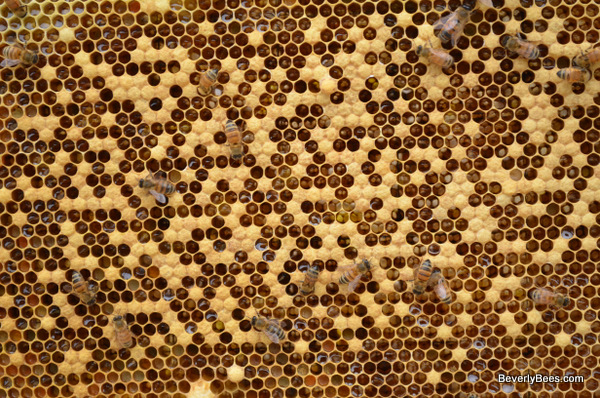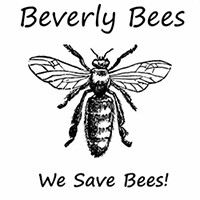One Honey Bound Hive And One Starving Hive
On May 26th, after I inspected Crocus and saw they had very little food and found eggs in the queen cups, Brian and I took a peek at Brian’s hive Squill. It was time to add a second super to this hive. In fact, we probably should have added the second super two weeks ago. But being a new beekeeper, Brian didn’t fully understand the urgency of adding more space and took his time getting the equipment ready. The thing about bees is they don’t wait for you. They do what they want whether or not you are ready for it. If you don’t give them more space when they need it the hive may get crowded and swarm.
When we opened Squill we found that the entire hive was honey bound. All 10 frames were drawn out and every available space was filled with syrup.

The queen was there but she was not laying eggs. There was only capped brood, no eggs and only a few larvae in the hive. There were half a dozen empty queen cups.

It appeared this hive was getting ready to swarm. The bees were backfilling the brood nest as the capped brood hatched out which prevented the queen from laying eggs. As the queen stops laying, she slims down and gets ready to fly in preparation for swarming. You can see the spotty brood pattern in the pictures. As each bee hatched out, their corresponding cell was filled with nectar or syrup, instead of remaining open for the queen to lay.

In this situation you need to act quickly to open up the brood nest by extracting honey or adding empty drawn comb. Luckily, I had the perfect solution a few hives over in the apiary. My hive Crocus was starving. This hive has lots of bees but hardly any stores and frame after frame of empty comb. I took 4 frames of empty comb without bees from Crocus and put them into Squill. Then I took 4 frames of syrup/nectar/honey from Squill, shook off the bees and put these frames in Crocus. It actually worked out perfectly because the honey bound hive now had a place to lay eggs and the starving hive now had plenty of food. Brian also removed the queen cups in Squill and we added the second super to his hive. We then closed up the hives for the day.
The next day I planned to split Crocus since this hive had queen cups with eggs. I was hoping to prevent them from swarming. I got all the equipment ready and opened up the hive. First I tried to find two frames of pure honey or nectar for the split hive. Two of the frames I moved over from Brian’s hive Squill were just honey or nectar and two had a tiny amount of capped brood. One had a few open drone larvae which had been uncapped accidentally when the queen cups were removed.
When I removed the the two frames of honey from Squill I discovered they were now empty! The bees in Crocus ate or robbed out the honey frames I put in there the day before. In addition, all the field bees came back with nectar yesterday. The nectar flow has arrived at last! All the frames that were empty the day before were being filled with nectar by the field bees.
Part of the problem with Crocus was the queen was only laying eggs in the top box. The bottom super was almost empty yesterday before I moved the 4 frames with honey and a small amount of brood over from Squill. I placed these frames in the bottom box of Crocus. Apparently that was enough to motivate the queen. The queen from Crocus must have smelled the other queen on the brood and frames. Overnight she moved into the bottom super and began to lay eggs down there. In addition, the queen cups with eggs I had seen the day before had been completely removed by the bees. Moving frames from Squill into Crocus had averted the swarm crisis! These bees now had the food they needed and had given up on swarming. I did not have to split Crocus anymore! I was so happy! Now a starving hive is filled with nectar and a honey bound hive has room to lay. Plus the nectar flow has finally arrived! I love the way this all worked out in the end.
Other Posts You May Enjoy:
